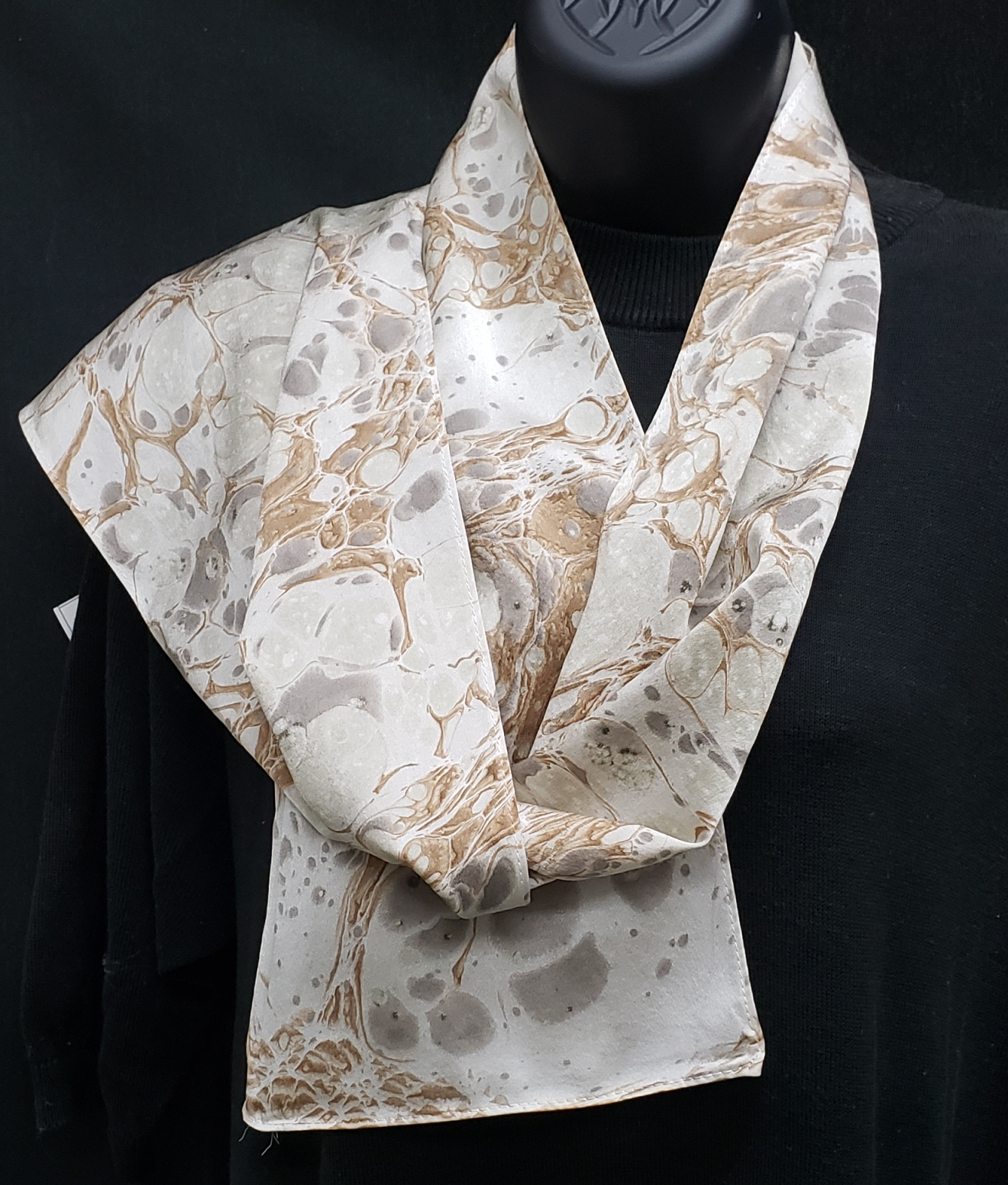Some dyes in my garden: Japanese indigo, goldenrod, tansy, marigold, madder. These give me the primaries--blue from indigo, red from madder, and yellow from the others.
 However, I can also get the primary colors from Japanese indigo, Persicaria tinctoria. I have been growing it in my garden since 2006, doing research and increasing my dye repertoire. It is a magical plant whose leaves contain the precursors for blue and red plus an actual yellow colorant. With the manipulation of time, temperature, and pH, the primary and secondary colors can be obtained. The blue is indigo, the source of the blue in blue jeans. The red is indirubin, which is anti-leukemic and is being studied for the treatment of other cancers. The yellow is kaempferol, also found in fruits and vegetables and is antioxidant, antiinflammatory, antimicrobial, antidiabetic, antiobesity, and anticancer. This is not to say we should eat indigo leaves, but we can wear their colors instead. In India the concept of ayurvastra suggests that the healthful aspects of natural dyes can be transferred from the skin to the bloodstream; there is no scientific evidence and no research being done to prove or disprove this. However, we can entertain the concept and wear our naturally dyed clothing simply hoping or full on believing that it's healing powers will be of benefit to our bodies.
However, I can also get the primary colors from Japanese indigo, Persicaria tinctoria. I have been growing it in my garden since 2006, doing research and increasing my dye repertoire. It is a magical plant whose leaves contain the precursors for blue and red plus an actual yellow colorant. With the manipulation of time, temperature, and pH, the primary and secondary colors can be obtained. The blue is indigo, the source of the blue in blue jeans. The red is indirubin, which is anti-leukemic and is being studied for the treatment of other cancers. The yellow is kaempferol, also found in fruits and vegetables and is antioxidant, antiinflammatory, antimicrobial, antidiabetic, antiobesity, and anticancer. This is not to say we should eat indigo leaves, but we can wear their colors instead. In India the concept of ayurvastra suggests that the healthful aspects of natural dyes can be transferred from the skin to the bloodstream; there is no scientific evidence and no research being done to prove or disprove this. However, we can entertain the concept and wear our naturally dyed clothing simply hoping or full on believing that it's healing powers will be of benefit to our bodies.
The colors on cotton are not the brights of the color wheel, but take best on silk without any additional chemicals. The blue is robin's egg blue, the "red" is actually pink to magenta and mixes with blue to give lavender to purple. There is currently no method known to home dyers to isolate the pure red indirubin, there is always a little blue involved. Indirubin is rare as a dye in commerce; it is only available on a very small scale from natural dyers. There are only a handful of methods for obtaining it, and I developed one of them. The colors I call "indirubin" in my work are anywhere from pink, to lavender, plum, violet or purple.
The yellow in Japanese indigo leaves is a light yellow unless some chemistry is used to isolate and concentrate it. I get a beautiful green from the combination of blue and yellow. The brighter colors can be achieved on silk, on cotton the pastel colors prevail.
I get clear bright yellows on both cotton and silk from goldenrod and tansy, and golden yellows from marigold, all of which I grow in my garden.
I also grow madder, another source of red dye. The roots are used, although the leaves and stems can give pink. It takes 3 years from the start of a patch to harvest enough good quality dye from the roots.
I gather walnuts from my walnut tree, and also forage locally available dye plants.
Occasionally I will have access to sawdust from instrument and furniture makers and the rare arborist or small lumber mill with a known dye wood.
I also use natural dye extracts for colors I can not grow. These are colors from trees or other plants and even bugs that are not suitable for either my limited space or my climate.
 I have also developed my own marbling colors from natural dyes. I use tannins--cutch, wattle, pomegranate, and myrobalan among others-- to shift the base color. I sometimes dip the scarf in an iron solution to darken both the tannin and the base color. Shown is a scarf with just the tannins, no other dye, after dipping in the iron solution.
I have also developed my own marbling colors from natural dyes. I use tannins--cutch, wattle, pomegranate, and myrobalan among others-- to shift the base color. I sometimes dip the scarf in an iron solution to darken both the tannin and the base color. Shown is a scarf with just the tannins, no other dye, after dipping in the iron solution.
Tannin is used as part of the mordanting process for cotton, in conjunction with a metal solution, usually alum. The tannin plus alum helps the dye bond to plant fibers. My strategy is to treat the fabric in alum, then marble the tannins, treat again in alum and then dye with natural dyes. Sometimes, however, I marble on fabric that has already been dyed.
Yes, the process is involved, but I so love the results!
All finished pieces may be hand washed in warm or even cold water, rinsed and dried flat or on a line, then ironed on the setting for the fabric.
